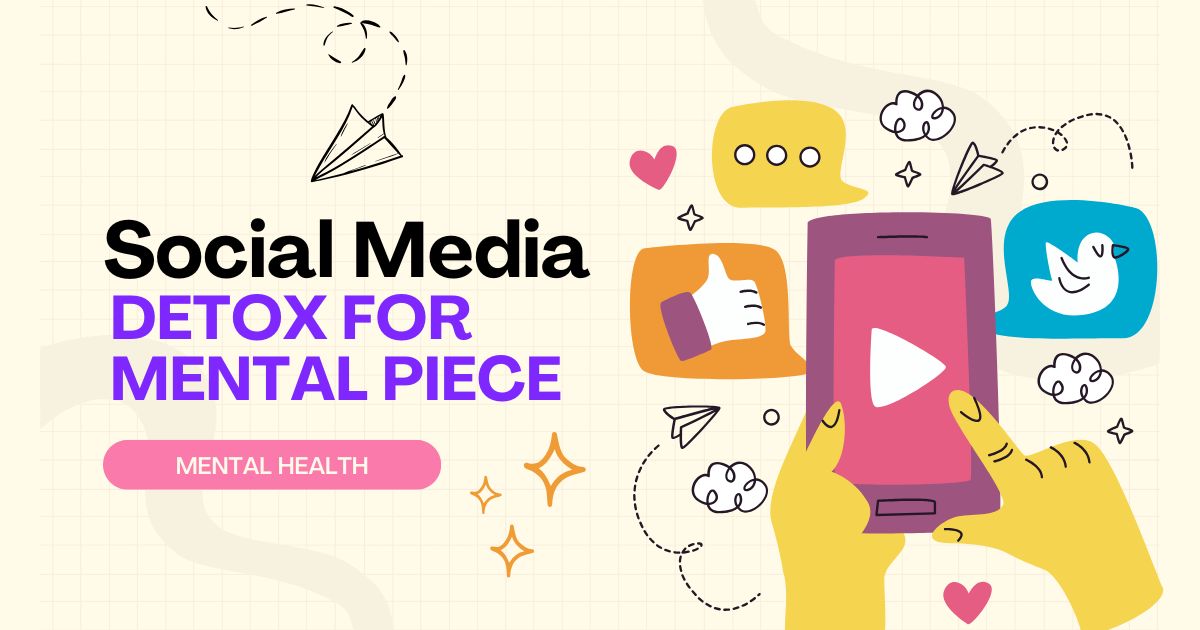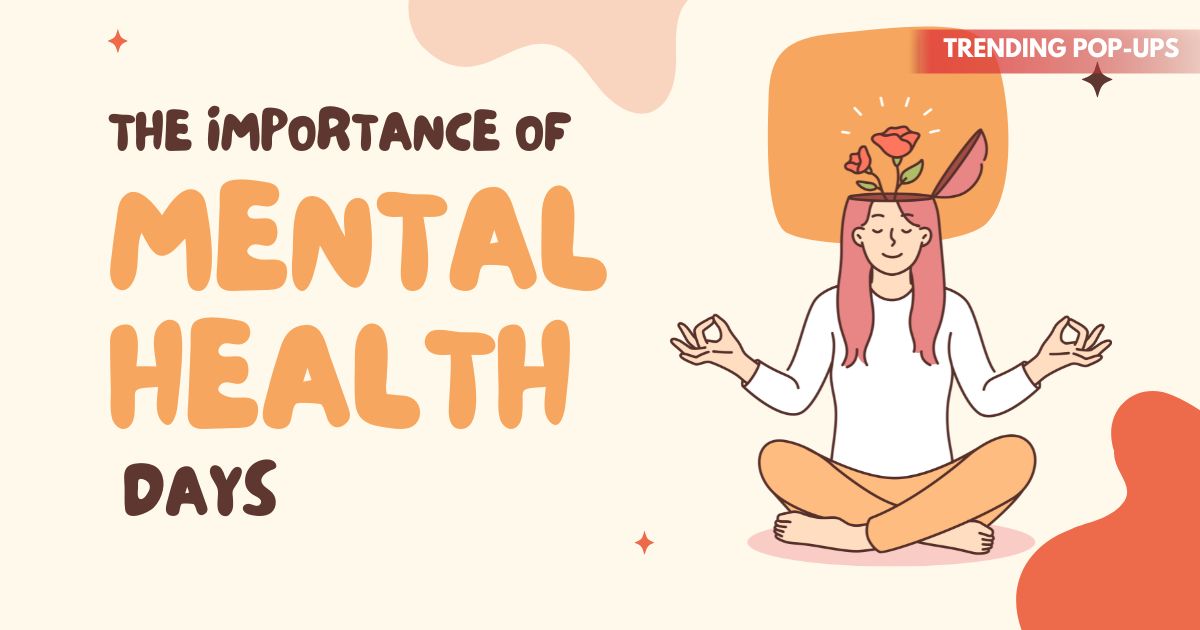In today’s hyper-connected world, social media is a double-edged sword. While it helps us stay connected and informed, excessive use can lead to stress, anxiety, and reduced mental clarity. A social media detox—a deliberate break from online platforms—can restore balance, improve focus, and promote mental peace. This article explores the importance of detoxing from social media, practical strategies, and the psychological benefits of reducing digital overload.
Why a Social Media Detox is Important
Social media platforms are designed to capture attention. Continuous scrolling, notifications, and algorithm-driven feeds can overwhelm the brain and create a constant state of alertness.
Some negative effects of excessive social media use include:
-
Increased anxiety and stress due to comparison and FOMO (fear of missing out).
-
Reduced productivity from constant distractions.
-
Sleep disturbances caused by blue light exposure and late-night scrolling.
-
Lower self-esteem linked to unrealistic portrayals of others’ lives.
A social media detox provides an opportunity to reset digital habits, reclaim time, and improve emotional well-being.
Signs You May Need a Social Media Detox
Knowing when to take a break is crucial. Common signs include:
-
Feeling anxious or irritable after using social media.
-
Spending more than intended time scrolling daily.
-
Difficulty concentrating on work, studies, or hobbies.
-
Comparing yourself frequently to others’ posts.
-
Experiencing disrupted sleep due to late-night device use.
Recognizing these signs early can help prevent long-term mental and emotional strain.
Benefits of a Social Media Detox
Taking a deliberate break from social media can lead to significant improvements in mental and emotional health:
1. Reduced Stress and Anxiety
Detaching from online pressures and comparisons allows the brain to relax. Studies show that limiting social media use decreases cortisol levels and improves mood.
2. Improved Focus and Productivity
Without constant notifications and scrolling, attention spans increase, and tasks are completed more efficiently.
3. Better Sleep Quality
Reducing screen time, especially before bed, helps regulate circadian rhythms and improves overall sleep quality.
4. Enhanced Self-Esteem
Stepping away from comparison-driven content allows individuals to focus on their own achievements and personal growth.
5. Stronger Real-Life Connections
Time spent offline can be redirected toward meaningful face-to-face interactions, improving relationships and emotional support systems.
How to Plan a Social Media Detox
A successful social media detox requires intention, structure, and commitment. Here are practical steps:
1. Set Clear Goals
Decide why you want to detox—whether it’s reducing stress, improving sleep, or enhancing focus. Having a purpose makes it easier to stay consistent.
2. Start Gradually
For beginners, consider limiting social media usage for a few hours per day, then progressively extend the detox period.
3. Remove Notifications
Turn off alerts to prevent distractions and reduce the temptation to check apps constantly.
4. Delete Apps Temporarily
Uninstalling social media apps from your phone or tablet can create a stronger boundary and minimize impulsive usage.
5. Replace with Positive Activities
Fill the time spent online with productive or relaxing activities:
-
Reading books or articles
-
Engaging in hobbies like painting, music, or cooking
-
Exercising or practicing yoga
-
Spending quality time with friends and family
6. Reflect and Journal
Use this time to reflect on your thoughts and emotions. Journaling helps identify triggers and patterns related to social media use.
7. Set Boundaries Post-Detox
After the detox, establish mindful usage habits such as scheduled check-ins, limiting app time, and following accounts that inspire positivity.
Tips for Maintaining Mental Peace During Detox
-
Practice Mindfulness: Engage in meditation or deep breathing to reduce anxiety and enhance focus.
-
Digital-Free Zones: Keep bedrooms or dining areas free of devices to encourage relaxation and real-life interactions.
-
Accountability Partner: Share your detox plan with a friend or family member to stay motivated.
-
Monitor Emotional Response: Pay attention to changes in mood, stress, and productivity during the detox to reinforce positive outcomes.
Common Myths About Social Media Detox
-
Myth 1: Detoxing Means Completely Disconnecting – Even brief or scheduled breaks can provide significant mental health benefits.
-
Myth 2: Social Media is Always Bad – It’s not inherently harmful; the issue arises with overuse or compulsive scrolling.
-
Myth 3: Detox Reduces Opportunities – Planning a detox strategically ensures essential communications remain intact while unnecessary distractions are minimized.
Conclusion
A social media detox is more than a temporary break—it is a proactive step toward mental peace, emotional balance, and enhanced productivity. By recognizing the signs of overuse, setting intentional boundaries, and replacing online time with meaningful activities, individuals can reduce stress, improve sleep, and foster deeper real-life connections. Whether it’s a short weekend detox or a longer digital reset, stepping away from social media can provide lasting benefits for mental and emotional well-being
Also Read : The Connection Between Sleep Deprivation and Anxiety
FAQs
1. How long should a social media detox last?
Detox periods can range from a single day to several weeks. Even short breaks of 24–48 hours can improve mental clarity.
2. Can social media detox help with anxiety?
Yes. By reducing exposure to stressful content, comparisons, and notifications, anxiety levels often decrease.
3. Should I quit social media permanently?
Not necessarily. The goal is mindful usage rather than complete elimination. Structured boundaries often suffice.
4. Can children benefit from social media detox?
Absolutely. Limiting screen time helps children develop better focus, social skills, and emotional resilience.
5. What if I feel FOMO during a detox?
Feeling FOMO is common. Focus on the benefits of the break and engage in offline activities that bring satisfaction and joy.



